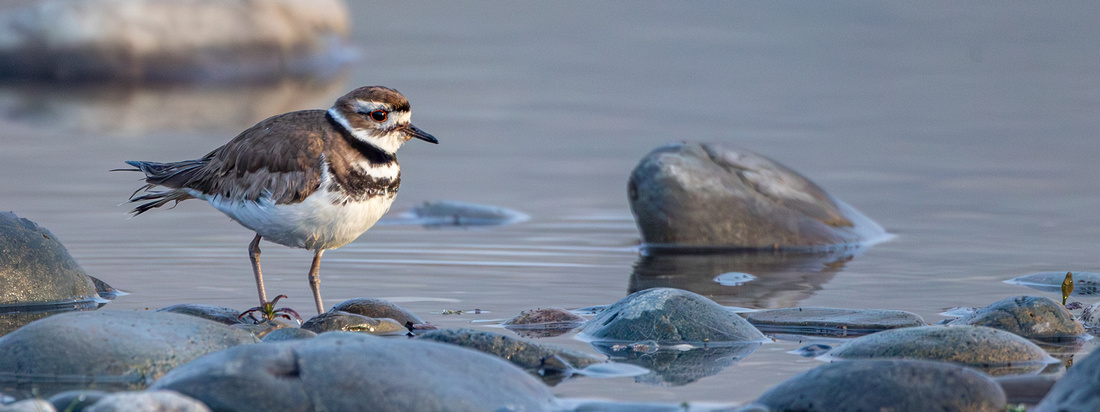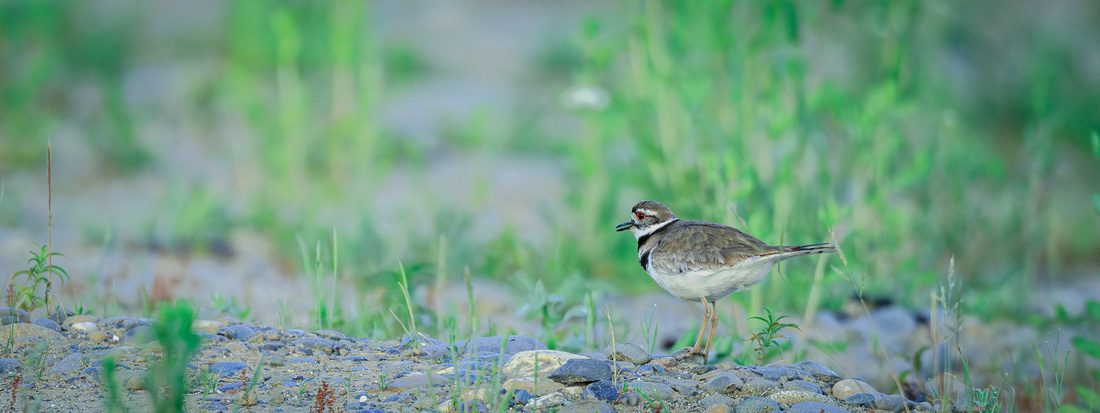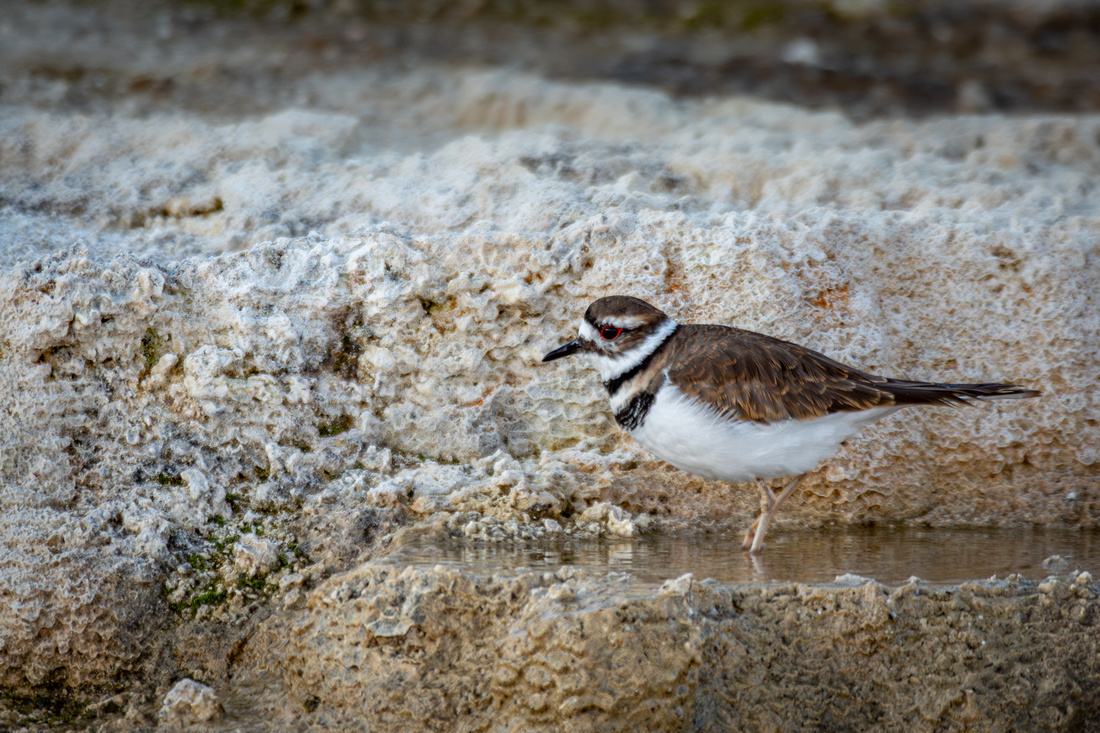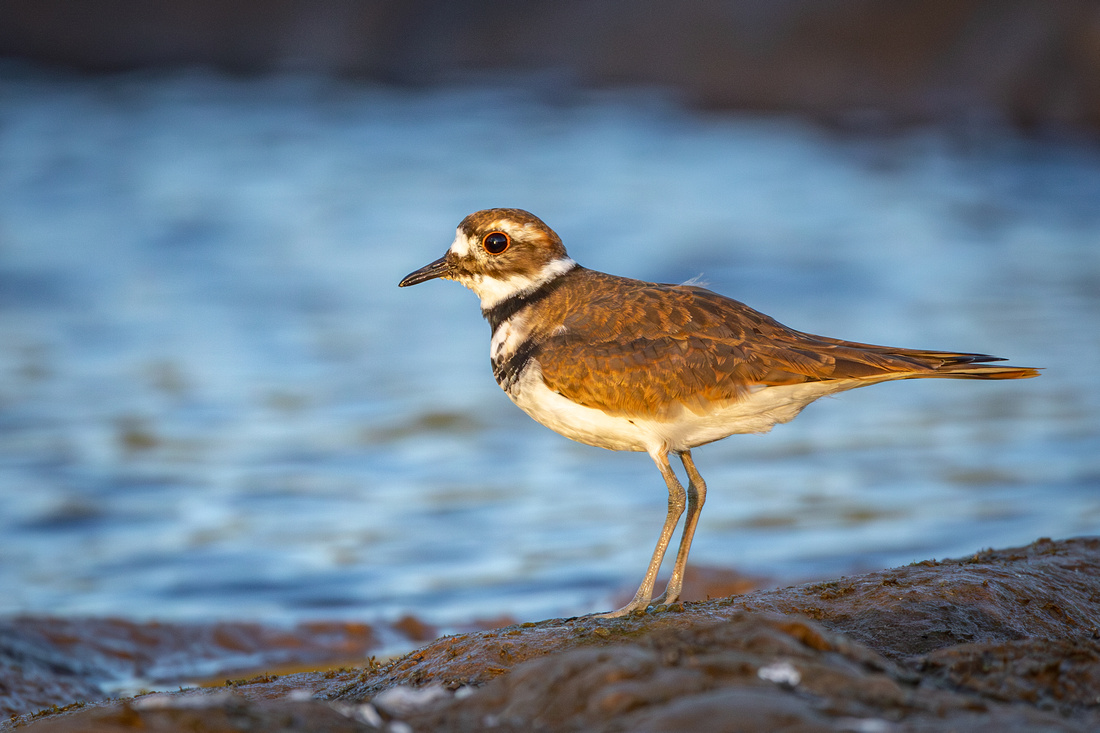Species Highlight: Killdeer
Species Highlight: Killdeer
Text and photos by Heather Cline
The Killdeer is a large plover that gets its name from its loud distinct call that sounds like "kill-deer", "kill-dee", or "dee-dee-dee". These birds are common to lawns, golf courses, athletic fields, and parking lots. I am fortunate to see these fascinating and confident little birds on a daily basis in a preserve near my home and thought I would share some interesting facts and photos I have captured.
Size
The Killdeer is a medium sized shore bird, with males being slightly larger than females.
- Length: 8 - 11 inches
- Wingspan: 18 - 19 inches
- Weight: 2.7 - 4.5 ounces
Lifespan
Their average lifespan is just shy of 11 years
Anatomy & Physical Characteristics
Killdeers have tan backs, white chests, and two black bands around their necks and upper chests. Their disruptive pattern serves as camouflage against predators. Their bills are Long and stout, used to probe the ground for worms and grubs. Plumage among males and females is the same.
Speed & Agility
These tawny birds run across the ground in spurts, stopping with a jolt every so often. In flight, they are strong and swift fliers reaching speeds of up to 35 mph.
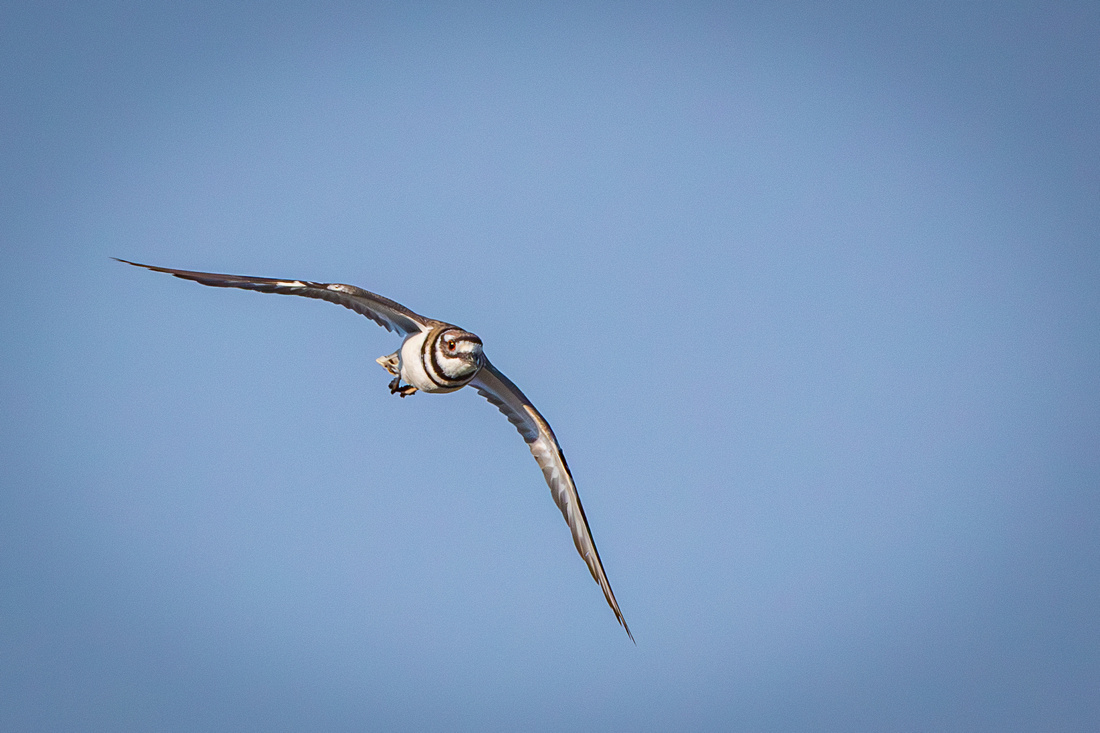

Diet
|
Killdeer forage for a variety of foods, including:
|
 
|
Social and Breeding Behaviors
Breeding
 
|
Killdeer usually begin breeding in spring with early spring more common in southern regions and late spring more common in northern regions. They typically start breeding at 1 year of age. These birds are monogamous. The male killdeer will claim a territory and attract mates with calls and aerial displays. The male lowers his breast to the ground and scrapes a shallow depression, then the female approaches and takes his place. The male then stands with his body tilted forward, tail raised and spread, and calling rapidly. Non-migratory breeding pairs may remain together year-round. |
Nesting
|
The nest is built by both the male and female and is a simple depression scraped into the bare earth, sand, gravel or mud. They are typically located in open areas with sparse vegetation, such as fields, road shoulders, parking lots and flat graveled rooftops. Females lay an average clutch of 4 eggs which are incubated for 24 to 28 days. Both parents participate in incubation. The eggs Blend in with their background of pebbles, stones, or earth. Upon hatching, the chicks are down-covered and active and are able to leave the nest soon after their down dries. Unlike most birds, killdeers feed their chicks in a feeding area as opposed to the nest. Chicks remain with the parents until they are able to fly at roughly 20 to 31 days after hatching. To protect the nest from predators, the Killdeer’s perform a broken-wing act to lead predators away from the nest. To guard against large animals, the Killdeer fluffs itself up, displaying its tail over its head, and running towards the animal in an attempt to make it change its path. |
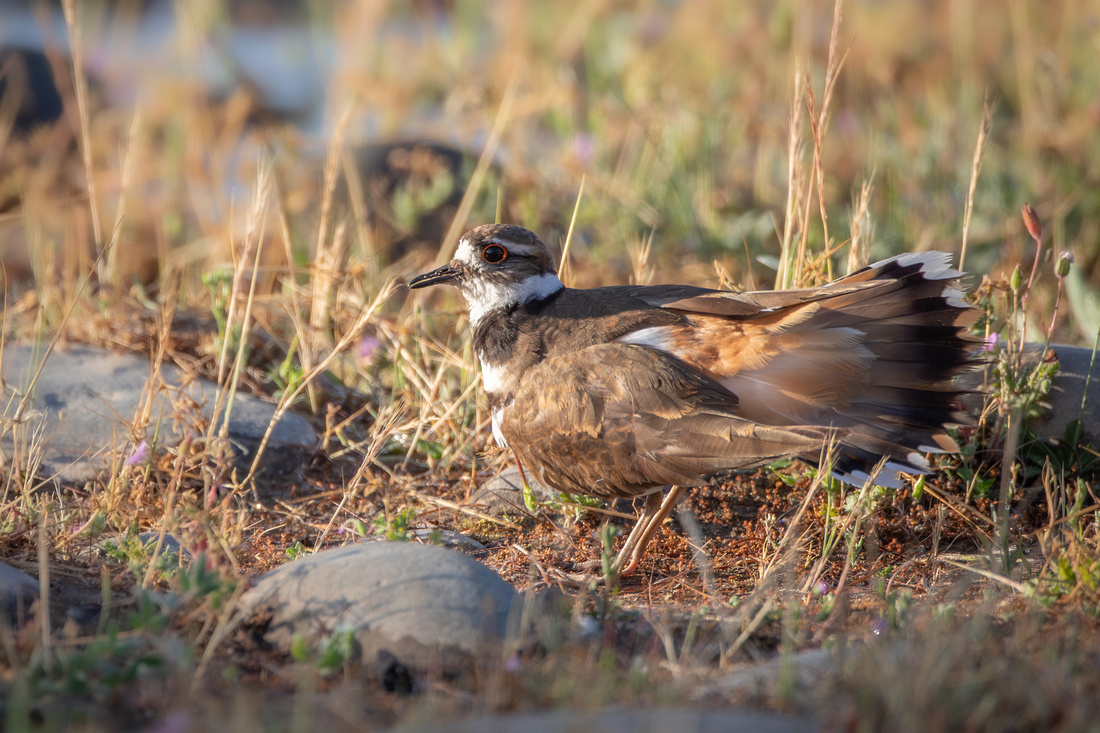 
|
Communication
Killdeer communicate using vocalizations and physical displays, which is not surprising given how they got their name.
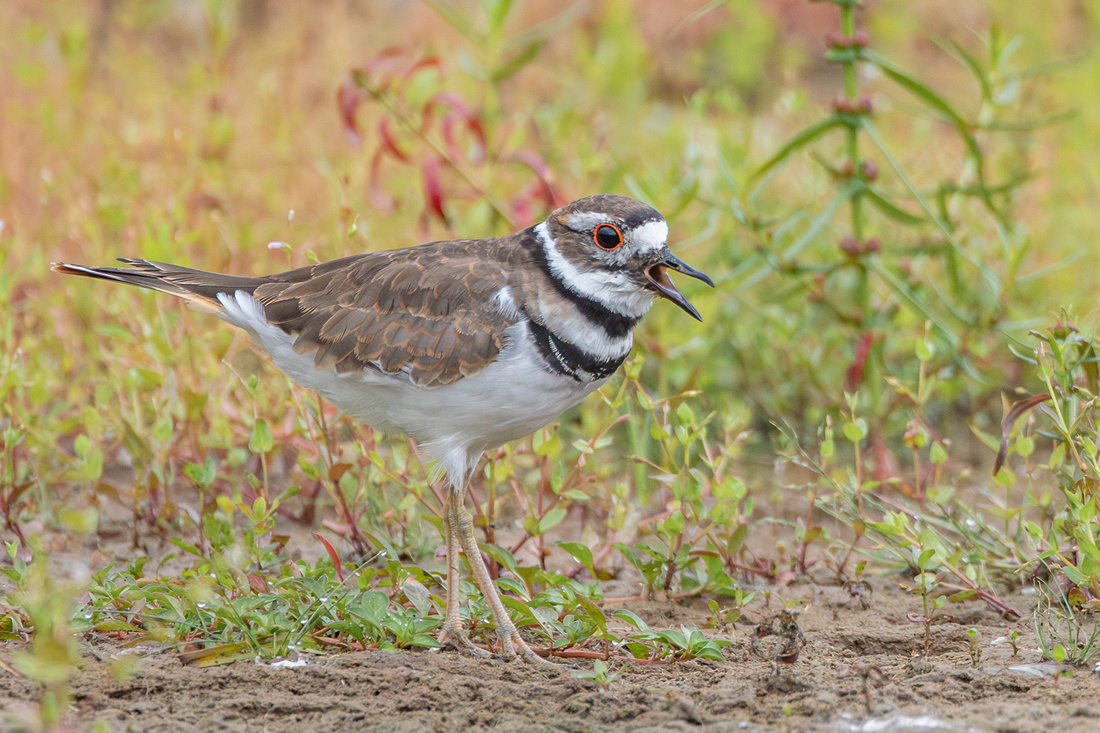

Range and habitat
Killdeer are common in Northa America, from western Alaska to northern Chile. Those that live in northern US and Canada migrate south to Central America and Mexico in the winter but many populations in more consistent climates stay in their region year-round.
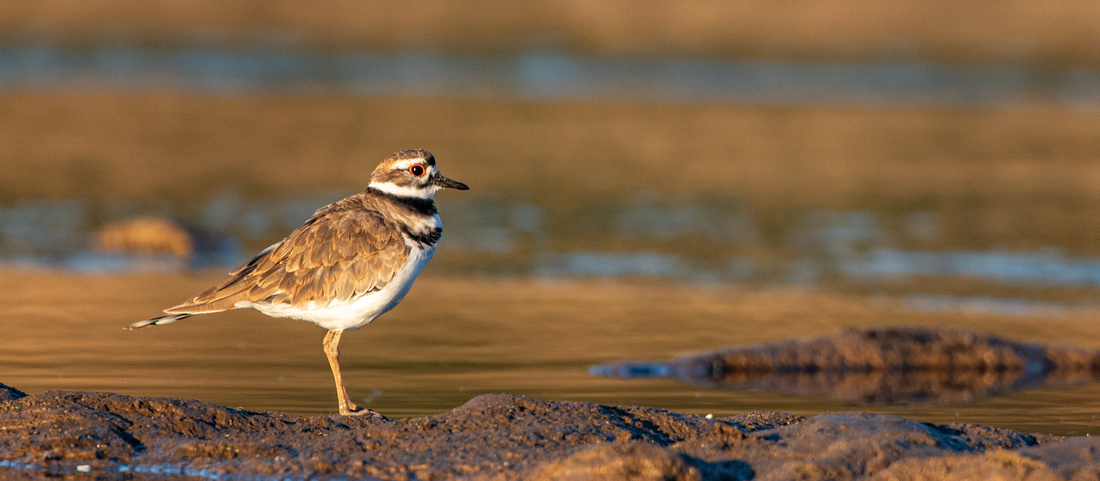

Predators and Threats
Killdeer are predated on by a variety of animals from raptors, gulls, crows, small mammals, and snakes. In terms of human threats, they are subject to insecticide poisoning and collisions with cars and structures. They have adapted well, and their population is estimated around 1 million worldwide.
I hope you enjoyed this post, and if you would like to see any of my other Killdeer photos, please check out my gallery.
